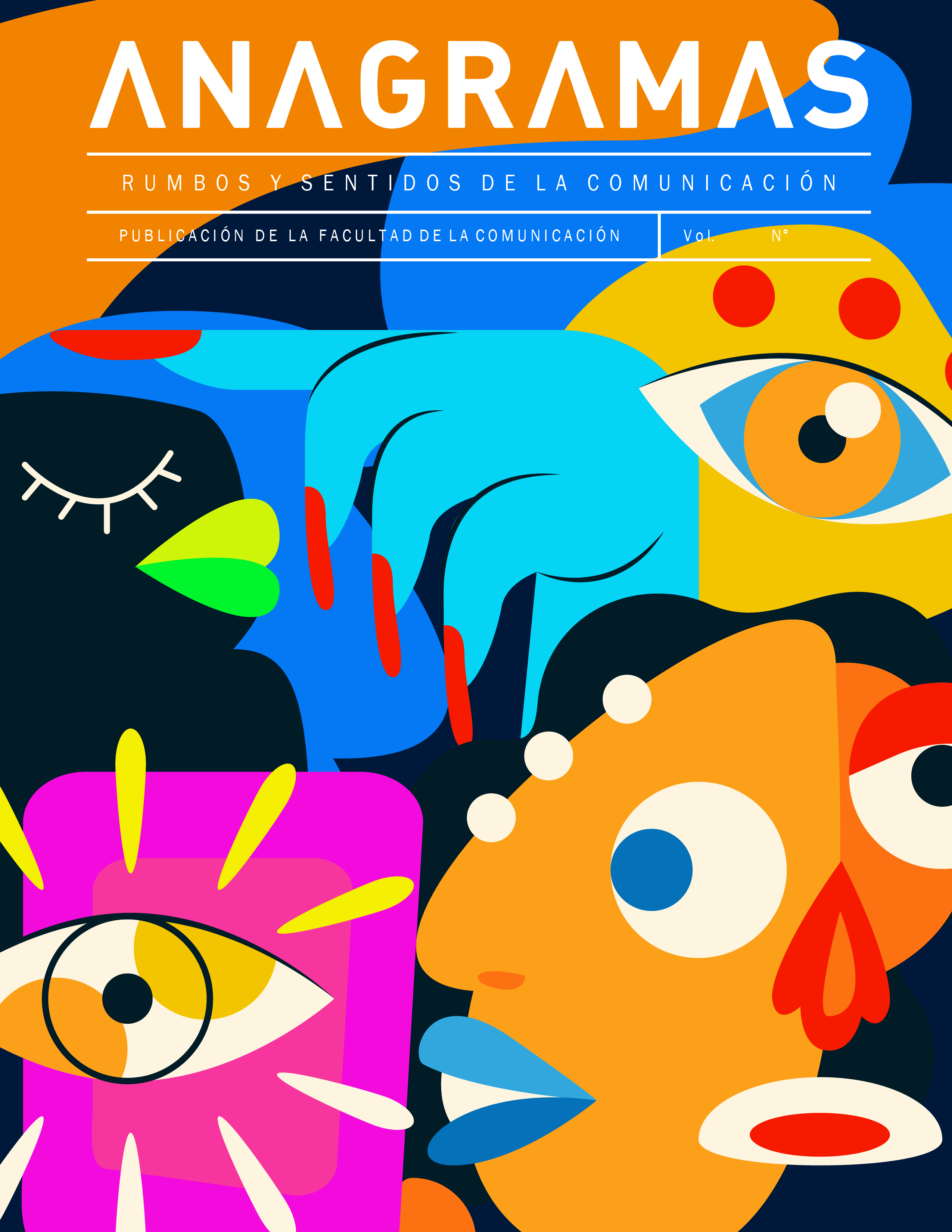Resignifications of images produced in Mali, Kenya and India based on the semiotics of photography
Main Article Content
Abstract
This article aims to analyze the meanings of photographs produced in Mali, Kenya, and India, after their colonization, since these images enable a reflection on the intercultural uses of photographic images. To this end, two different levels of relevance are taken into account when considering the meaning of these images, based on a method of understanding visual significance postulated by the semiotics of photography. First, the images are understood as a text-statement, in which the escape lines of these images weave in relation to a colonial visuality, based on the use of a unifocal perspective of the images. Local photographic traditions creatively deform visuality, circumscribing photographs within a de-narrativized and de-perspectivized scope of the photographic surface and valuing the tactility of the gaze. Secondly, photographic statutes are considered, which destroy the documentary value of images and reorder them based on other logics of production and understanding. It is observed how certain studio portraits recreate a social situation that no longer places realism at the center of the visual message, but takes photography as a means of imagining scenes and belonging to places that bring the photographed subject closer to modern values. The results of the reflections developed in the article attest that, while certain photographic practices promote forms of domination of others, alternatively, reordering of practices can be observed around the reallocation of subjective positions that are part of the photographic construction.
Article Details
References
Appadurai, A. (1997). The colonial backdrop. Afterimage, 24(5), 4-6. https://doi.org/10.1525/aft.1997.24.5.4
Appadurai, A. (2019). European self-making and India’s alternative modernities. In S. Kumar, S. P. Mohanty, A. Kumar & R. Kumar (Eds.). China, India and Alternative Asian Modernities, 3-17. Taylor and Francis. https://doi.org/10.4324/9780429260865
Aquino, L. (2013). Entre olhar o turista e olhar para o que ele olha. In S. Dobal, & O. Gonçalves. (Orgs.). Fotografia contemporânea − Fronteiras e transgressões. Casa das Musas.
Aquino, L. (2016). Picture Ahead – a Kodak e a construção do turista fotógrafo. Editora do Autor
Azoulay, A. (2013). Potential history: Thinking through violence. Critical Inquiry, 39(3), 548-574. https://doi.org/10.1086/670045
Behrend, H. (2001). Fragmented visions: Photo collages by two Ugandan photographers. Visual Anthropology, 14(3), 301-320. https://doi.org/10.1080/08949468.2001.9966837
Behrend, H. (2003). Imagined Journeys: The Likoni Ferry Photographers of Mombasa, Kenya. In C. Pinney & N. Peterson (Orgs.). Photography’s Other Histories, 221-239. Duke University Press.
Behrend, H. (2009). ‘To Make Strange Things Possible’: The Photomontages of the Bakor Photo Studio in Lamu, Kenya. In K. Njogu & J. Middleton (Eds.). Media and Identity in Africa, 187-207. Edinburgh University Press.
Belting, H. (2009). Antropología de la Imagen. Katz.
Benjamin, W. (1972). A short history of photography. Screen, 13(1), 5-26. https://doi.org/10.1093/screen/13.1.5
Bourdieu, P. (Org.). (1991). Towards a Sociology of Photography. Visual Anthropology Review, 7(1), 129-133. https://doi.org/10.1525/var.1991.7.1.129
Bracchi, D. (2015). Uma investigação sobre os paradigmas da visão a partir de duas vda Última ceia. Estudos Semióticos, 11(2), 19-24. https://doi.org/10.11606/issn.1980-4016.esse.2015.111030
Braembussche, A. V., Kimmerle, H. & Note, N. (2009). Intercultural Aesthetics. A worldview perspective. Springer Editors.
Burke, P. (2004). A história cultural das imagens. In P. Burke, Testemunha ocular: história e imagem. Tradução de Vera Maria Xavier dos Santos. EDUSC.
Cartier-Bresson, H. (1952). The decisive moment. Simon & Schuster.
Deleuze, G. (2007). Francis Bacon: a lógica da sensação. Tradução de Roberto Machado [et al.]. Jorge Zahar.
Dondero, M. G. (2020). Le plan de l’expression des images: Quelques réflexions sur support et apport. Semiotica, 234, 253-270. https://doi.org/10.1515/sem-2018-0124
Dondero, M. G. (2022). Para uma semiótica da fotografia. Tradução de Daniela Bracchi [et al.]. Editora da UFPE.
Evrard, A. Y. (2017). Modernity at Large: Cultural Dimensions of Globalization. Macat Library.
Floch, J. (1987). Les Formes de L’empreinte. Pierre Fanlac.
Fontanille, J. (2005). Significação e visualidade: exercícios práticos. Tradução de Elizabeth Bastos Duarte e Maria Lília Dias de Castro. Sulina.
Fontanille, J. (2013). Figures of the body and the semiotics of imprint: Semiotic figures of the body in the humanities. Chinese Semiotic Studies, 9(1), 37-52. https://doi.org/10.1515/css-2013-0104
Harris, C. (2004). The Photograph Reincarnate. The Dynamics of Tibetan Relationships with Photography. In E. Edwards & J. Hart (Eds.). Photographs Objects Histories: on the Materiality of Images. Routledge.
Jay, M. (2020). Regimes escópicos da modernidade. Tradução de Lara Casares Rivetti. ARS, 18(38), 329-349. https://doi.org/10.11606/issn.2178-0447.ars.2020.169121
Kimmerle, H. (2009). Living (with) Art: The African Aesthetic Worldview as an Inspiration for the Western Philosophy of Art. In A. V. Braembussche, H. Kimmerle & N. Note. Intercultural Aesthetics. A worldview perspective. Springer Editors.
Lowndes Vicente, F. & Aïsha Azoulay, A. (2023). Ariella Aïsha Azoulay – Unlearning, An interview with Ariella Aïsha Azoulay. Análise Social, 55(235), 417-436. https://doi.org/10.31447/AS00032573.2020235.08
Marchianò, G. (2009). An Intercultural Approach to a World Aesthetics. In A. V. Braembussche, H Kimmerle & N. Note. Intercultural Aesthetics. A worldview perspective. Springer Editors.
Oguibe, O. (1993). Holding unto own space eight african women artists. Third Text, 7(23), 131-135. https://doi.org/10.1080/09528829308576426
Oguibe, O. (1996). In/sight: African Photographers, 1940 to Present. Guggenheim Museum.
Oguibe, O. (1999). Finding a place: Nigerian artists in the contemporary art world. Art Journal, 58(2), 30-41. https://doi.org/10.2307/777946
Parente, C. (1998). O retrato pintado: manufatura e utilização de fotografias pintadas à mão no Nordeste do Brasil. Revista do Patrimônio Histórico e Artístico Nacional, (27). IPHAN.
Pinney, C. (2017a). Civil contract of photography in India. In A. Rajagopal & A. Rao (Eds.). Media and Utopia: History, Imagination and Technology, 56-78. Routledge Chapman & Hall.
Pinney, C. (2017b). Notas da superfície da imagem: fotografia, pós-colonialismo e modernismo vernacular. Tradução de Janaína Sant’ana de Andrade. GIS - Gesto, Imagem e Som - Revista de
Antropologia, 2(1), 309-330. https://doi.org/10.11606/issn.2525-3123.gis.2017.129731Pinney, C. (2020). Locating photography. In S. Bull (Ed.). A Companion to Photography, 29-47. Wiley Blackwell.
Queiroga, E. (2017). Fotopintura Contemporânea: a pós-produção no trabalho de Mestre Júlio. Cartema, 6(6), 7-16. https://doi.org/10.52583/cartema.v6i6.234550
Urry, J. (2001). O olhar do turista. Tradução de Leonardo Abramowicz. Nobel e Sesc






